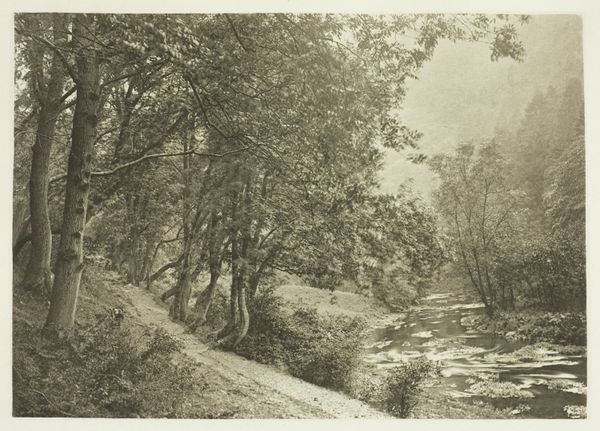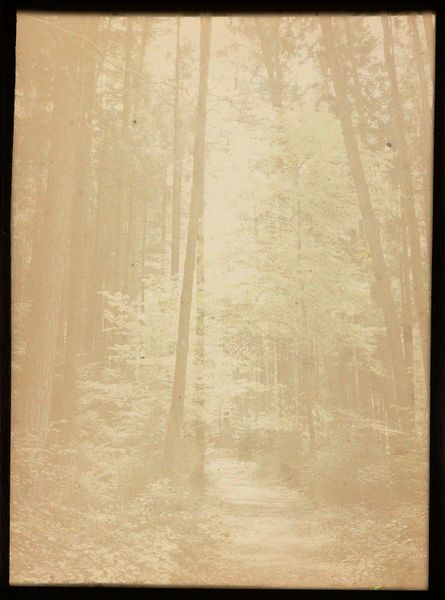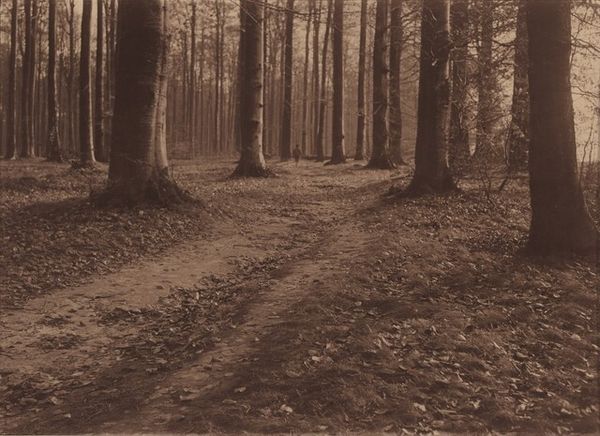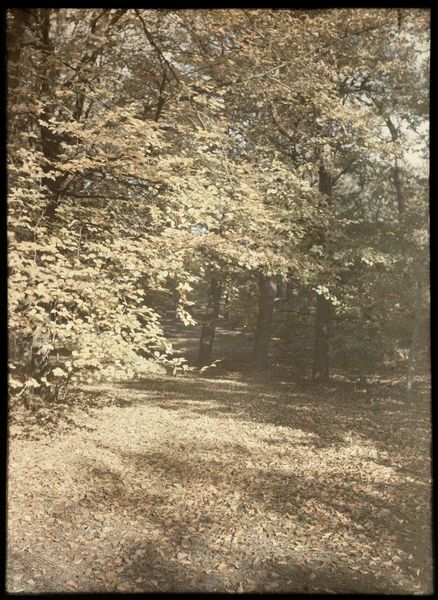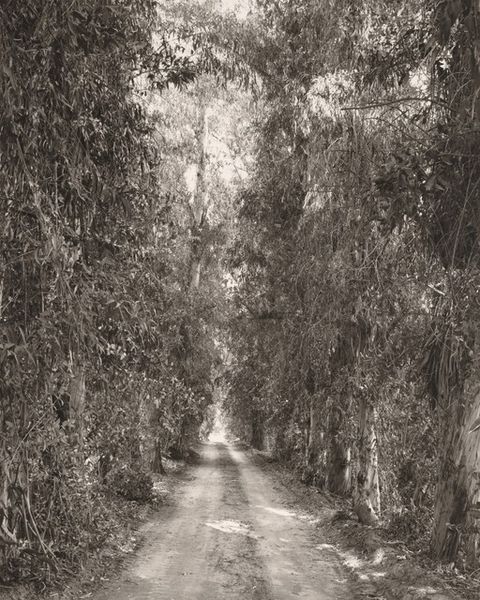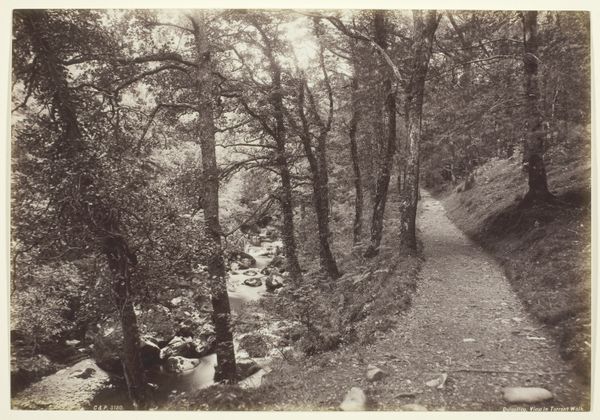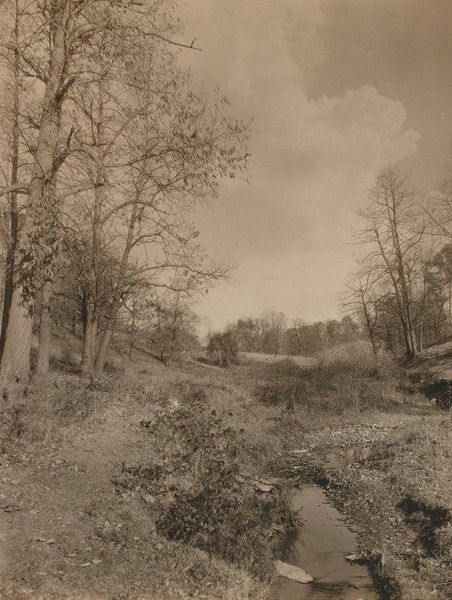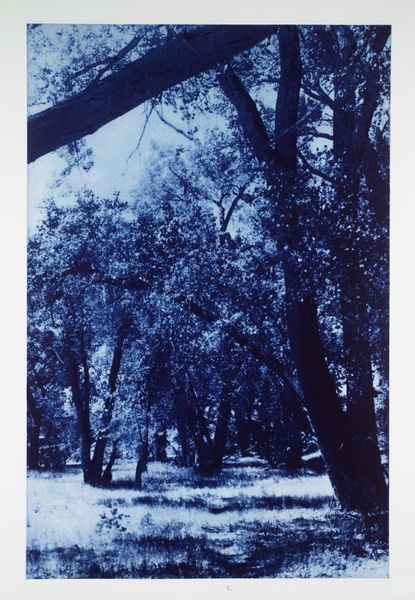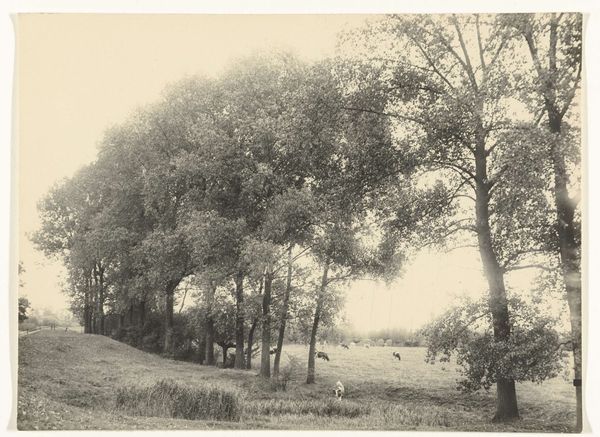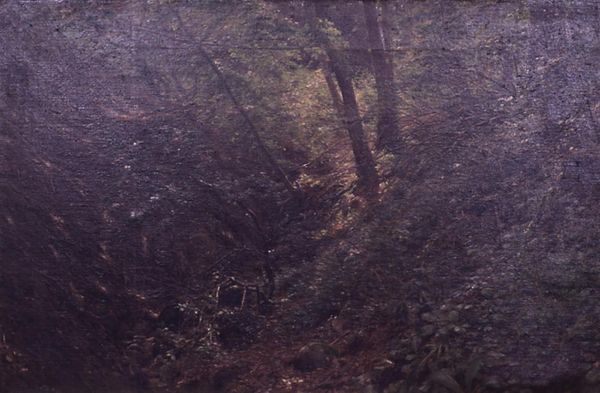
plein-air, photography
#
organic
#
organic
#
plein-air
#
landscape
#
nature
#
photography
Dimensions: 11.4 × 16.6 cm (image, appro×.)
Copyright: Public Domain
Editor: Here we have an anonymous photograph titled "Untitled" from around 1880, currently at the Art Institute of Chicago. The scene is a wooded path, and I'm struck by how inviting and tranquil it appears. What do you see in this piece? Curator: I see more than just a pretty landscape. Consider the era, the late 19th century. The rise of industrialization drastically altered people's relationship with nature, especially in Europe and the U.S. Photography like this offered a nostalgic yearning for the pastoral, an escape. Editor: So, it's not just about the beauty of nature, but also about what it represents? Curator: Exactly! Think about who had access to these images, too. Early photography was largely a bourgeois pursuit. These landscapes reflect their values, their anxieties about a changing world. They reinforce a particular idea of nature, often excluding or erasing the presence and labor of marginalized communities who directly interacted with those landscapes. Who do you think this road might be for? Who benefits from that imagined escape? Editor: That’s a powerful point. I hadn’t considered that the image is so carefully curated to communicate a specific worldview, reinforcing social structures and power dynamics through the romanticization of nature. Curator: Indeed. It encourages us to critically examine representations of nature and how they intersect with social, political, and economic forces. Even in something as seemingly innocent as a landscape photograph, layers of meaning await our deconstruction. Editor: That gives me so much more to think about when I look at art now! Curator: I'm glad to hear it. Never stop questioning the narratives presented to you!
Comments
No comments
Be the first to comment and join the conversation on the ultimate creative platform.

